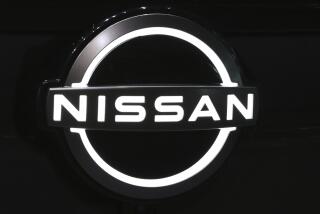Air Bags May Harm Children, Agency Warns
WASHINGTON — The government’s auto safety agency warned Friday that air bags could kill or seriously injure children who are not wearing seat belts.
The National Highway Traffic Safety Administration is investigating the deaths of six children killed in car crashes in the past three years to see if their injuries were caused by the force of rapidly inflating air bags.
“We’re very concerned,” Dr. Ricardo Martinez, the agency’s administrator, said in an interview.
Most of the children, ages 4 to 9, were not wearing a lap-and-shoulder belt, although one may have been wearing a lap belt, the agency said. They suffered head and neck injuries in crashes that occurred at speeds of less than 20 m.p.h.
*
Martinez said the low accident speeds were “one of the reasons we think this is just unacceptable, and we have to move fast.”
The agency formed a task force 1 1/2 months ago to look at the impact of rapidly deploying air bags on unbelted children and see if the agency needs to change any regulations.
The task force produced a 200-page report being used as a framework in requesting comment, starting next week, from auto makers, air bag manufacturers, auto safety groups and others.
Air bags are standard equipment at least on the driver’s side of most vehicles, and their use is growing rapidly since by law all new cars and light trucks must have air bags for both front seats by the 1999 model year.
About 50 million vehicles on the road have either a driver-side air bag or both driver and front passenger air bags, said William Boehly, the agency’s associate administrator for research and development.
Air bags have an outstanding performance record, having saved 911 lives since 1987, NHTSA officials said.
That’s why agency officials stress first that wearing a lap-and-shoulder belt is important because it keeps any passenger--child or adult--in a position where an air bag could protect them against injury.
The bags deploy at speeds of more than 100 m.p.h. to try to serve as an in-place cushion during a front-end crash.






